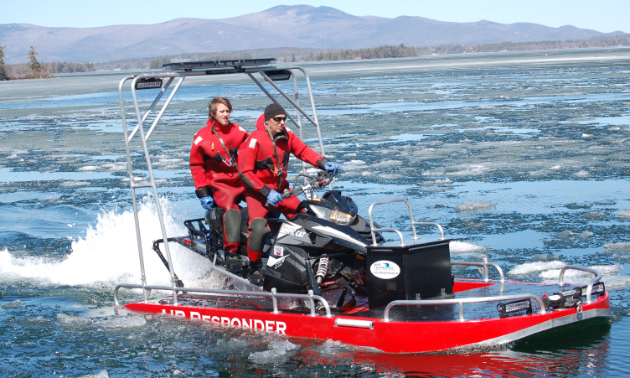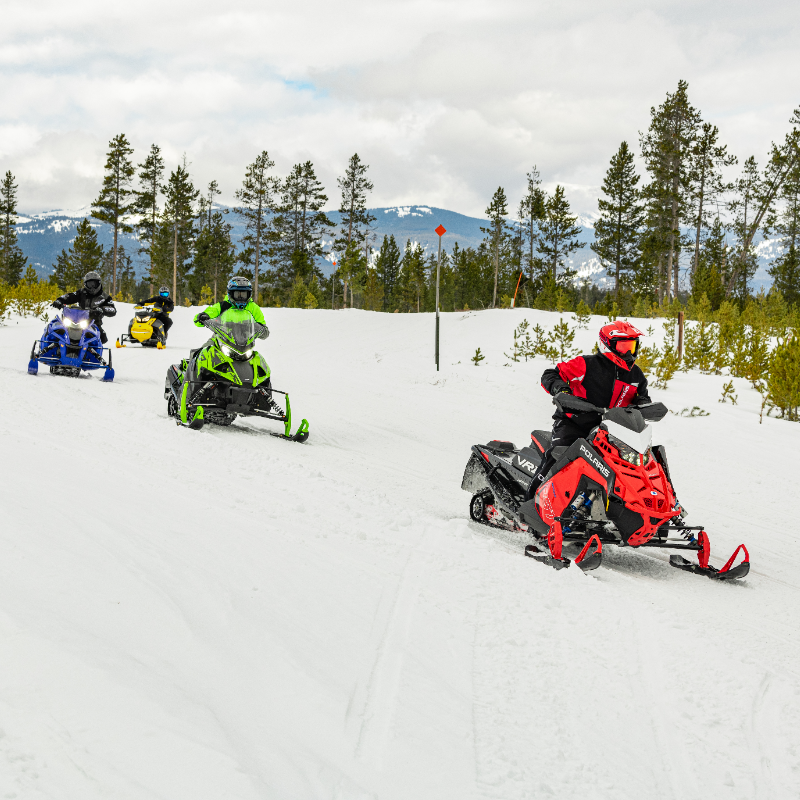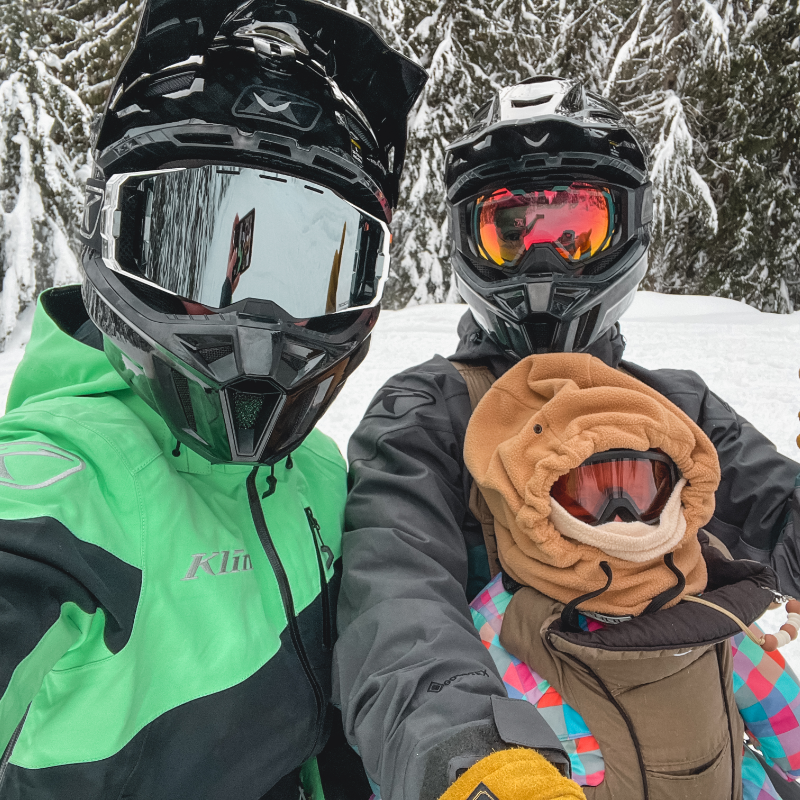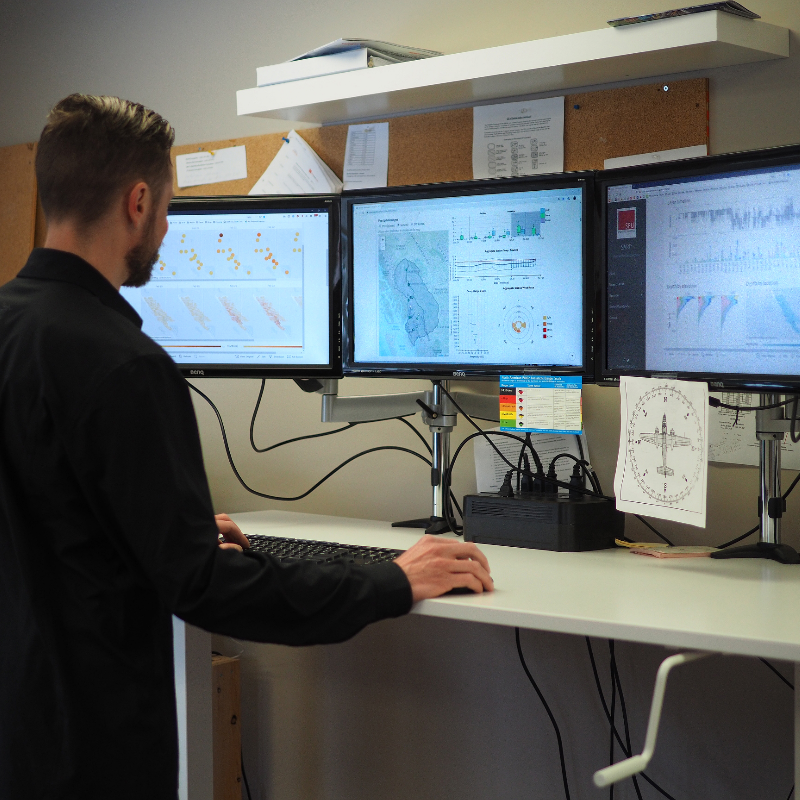Crusades are a thing of the past, but not for long. Perhaps you thought Indiana Jones had the last crusade in the late ’80s. Nope. There’s another crusade that’s sweeping across Saskatchewan in the name of the Canadian Rescue Hovercraft Pilots Association, aligned with the Saskatchewan Snowmobile Association: the 250 Crusade.
The 250 Crusade aims to save prairie recreationalists’ lives by raising $250 from 250 organizations or individuals to go towards Amphibious Response Support Unit (ARSU) ONE, a division of the Canadian Rescue Hovercraft Pilots Association (a registered non-profit organization). The $62,500 in funds raised will complete the purchase of the AR45 Hovercraft, which the organization has received for trial purposes. Once the purchase is complete, remaining funds will aid in specialized equipment needed to carry out their missions.
“In 2015, we looked at a way to give back to the communities through the association and developed the ARSU model,” said John Maczko, operations director and chief pilot for the Canadian Rescue Hovercraft Pilots Association in Regina. “The point of this was to have hovercraft and other pieces of equipment in different regions across Canada, supplying assistance and support where needed, including neighbouring provinces. We are called into action when first responders have exhausted their resources or they require amphibious capabilities.”
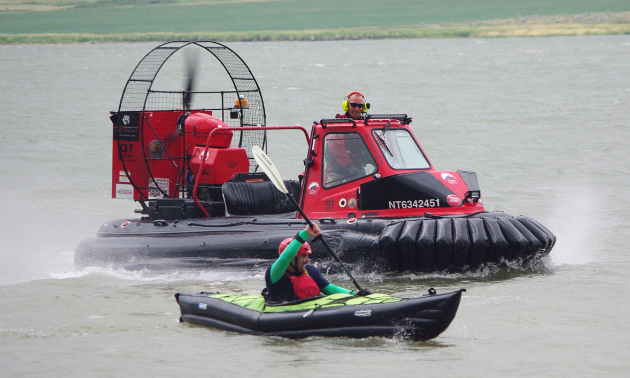
The air responder
Besides a traditional hovercraft, ARSU’s arsenal includes an air responder, an amphibious snowmobile. The rider can convert the air responder from a long-track snowmobile into an ice rescue platform that utilizes an outward shell made of a fibreglass hull. The floatable unit has a low freeboard, keeping it close to the water. The snowmobile clamps into additional skis that are located underneath to provide steering. The vessel is propelled forward by the snowmobile’s tracks that are equipped with ice studs.
“We looked at the air responder as an additional tool for our unit,” Maczko said. “It’s not a hovercraft, but it allows us to have another tool in our toolbox for our rescue response work. On land, it doesn’t really work as well as the AR-45, but on ice and on water, it’s good.”
The air responder transitions between ice and water via hydraulics, allowing the driver to change the trim of the tracks.
“In the water, you want to have the bow up a little more so you’re putting the tracks further in the water,” Maczko said. “When you’re on ice, you don’t want to put the nose or the bow into the ice, you want to flatten it out. That gives us better traction and propulsion.”
Making waves
If you think sliding a snowmobile from ice to water sounds like a blast, you’re absolutely right.
“This device can be used for recreation purposes as well,” said Maczko. “It’s loads of fun to drive. You’re doing a seamless transition between water and ice and then back and forth. It’s surreal the first time.”
Even when it isn’t on ice or water, the air responder turns heads.
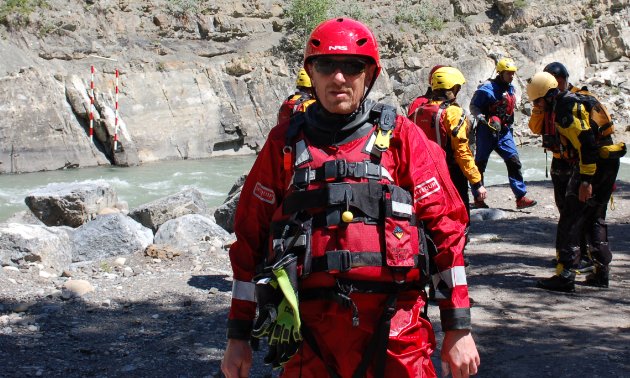
“We’ve had the air responder at the snowmobile show in Saskatoon for the past couple years with overwhelming interest,” Maczko said. “We’ve been trialing this unit for operations in Canada. It’s the only unit in the country.”
If you’d like to see the hovercraft and air responder with your own eyes, you have a couple of upcoming opportunities. John Maczko and the Canadian Rescue Hovercraft Pilots Association will have booths set up at the Spring Home Show’s Outdoor Adventure Show in Regina on March 28 to 31, 2019, as well as at the Parkland Outdoor Show and Expo in Yorkton on April 6 and 7, 2019.
To support the group’s 250 Crusade challenge, donate via PayPal on the organization’s web page or use their GoFundMe page.
